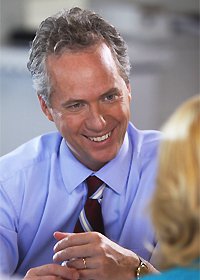 Mayor Greg Fischer announced today that the city plans to move a statue of Confederate officer and President of the Board of Park Commissioners John Breckinridge Castleman from the Cherokee Triangle neighborhood and the George Dennison Prentice statue from outside the Louisville Free Public Library.
Mayor Greg Fischer announced today that the city plans to move a statue of Confederate officer and President of the Board of Park Commissioners John Breckinridge Castleman from the Cherokee Triangle neighborhood and the George Dennison Prentice statue from outside the Louisville Free Public Library.
The Mayor’s decision comes after a review of recommendations by a Public Art and Monuments Advisory Committee that he appointed late last year to develop a guiding set of principles for evaluating existing and future public art and monuments in the city. Beginning in January, the committee held seven public meetings, gathering hundreds of comments from residents throughout the city before submitting their recommendations to the Mayor on June 30.
The Mayor’s announcement comes days before the one-year anniversary of the horrific display of hatred and bigotry that occurred in Charlottesville, Va., over plans to remove a Confederate statue there. Mayor Fischer said the anniversary is a reminder of the necessity for all citizens to look at our monuments and statues through the eyes of those who have historically been discriminated against.
“Our Public Art and Monuments committee worked very hard, in cooperation with citizens, to develop thoughtful principles to help ensure that our public art and monuments respect our history but reflect the values of today,” he said. “I support those principles, and I used the criteria laid out in their report to make this decision about the Castleman and Prentice statues.
“We all agree with the report’s finding that our city must not maintain statues that serve as validating symbols for racist or bigoted ideology – that’s why we relocated the Confederate statue near the University of Louisville two years ago,” the Mayor said.
“While Castleman was honored for contributions to the community, it cannot be ignored that he also fought to continue the horrific and brutal slavery of men, women and children; heralded that part of his life in his autobiography; and had his coffin draped with both a U.S. and Confederate flag,” he said. “And while Prentice was founder and long-time editor of the Louisville Journal newspaper, he used that platform to advocate an anti-Catholic, anti-immigrant message that led to the 1855 Bloody Monday riot where 22 people were killed.”
The Mayor said he understands that some view Castleman’s life as a story of redemption, given his civic contributions after the Civil War. And others have argued the statue should remain, perhaps with a marker noting Castleman’s complex history.
“But to make no decision and leave the statue in place, or attempt to ‘balance’ it somehow, is to rationalize the suffering still caused to people whose ancestors were bought, sold and bred like animals on a farm. That is the cold reality of the Confederate cause,” the Mayor said. “My threshold question was whether this statue would be appropriate in a predominately African American neighborhood. The answer obviously is no. It would be viewed as disrespectful of a historic and painful past.
“Moving these statues does not erase history. Moving these statues allows us to examine our history in a new context that more accurately reflects the reality of the day, a time when the moral deprivation of slavery is clear.”
Mayor Fischer said appropriate relocations will be explored; the city is, for example, in conversation with Cave Hill Cemetery about moving the statues to their family burial grounds there. There are legal and financial issues to address with any relocation, including, for Castleman, a review by the Cherokee Triangle Preservation District. If no other suitable sites are found, the statues will go into storage.
The goal is to have any issues resolved and the statues moved by the end of the year.
The Mayor thanked Public Art Administrator Sarah Lindgren, the Commission on Public Art, and the Public Art and Monuments committee members, as well as the hundreds of people who participated in public meetings throughout the city over the past year.
“This was a challenging, emotionally charged subject. But as I said when this process began, we can only be a city where all citizens can reach their full human potential if we face our big challenges head-on, and this includes the challenges of race and equity,” the Mayor said. “This process shows that Louisville has developed enough social muscle to have a deep, productive, and sometimes uncomfortable community conversation about these challenges.”
The Mayor echoed the committee’s conclusion in a letter sent to him with the report: “We urge our community to continue the work of open dialogue, not only about public art and monuments, but about all symbols of racism and discrimination and how we as a community can move forward to advance equity, inclusivity and healing.”
The committee’s report can be found at Louisville Metro Public Art’s webpage: https://louisvilleky.gov/government/public-art
 Weather
Weather Traffic
Traffic @LouisvilleDispatch
@LouisvilleDispatch @LouisvilleDisp
@LouisvilleDisp Subscribe
Subscribe
Leave a Reply